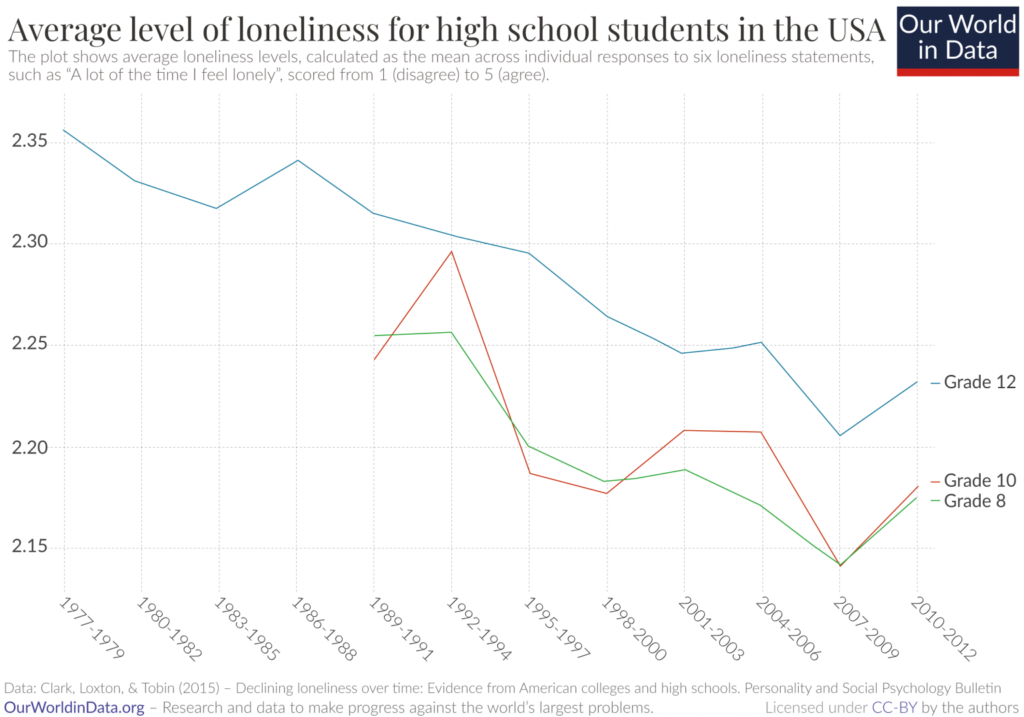
PEACEFUL
Trees have an underground social network to help them survive.
Is there a loneliness epidemic?
Loneliness is trending in America, according to the U.S. Surgeon General’s (Dr. Vivek H. Murthy) advisory board on the Healing Effects of Social Connection and Communication. But is it true? When I examine various studies, I get mixed messages. His shows that social interactions decreased for youth between 15 to 24 over the last two decades and that half of all adults are lonely. Dr. Murthy says he didn’t view loneliness as a public health concern when he took office in 2014 but became concerned when people of all ages and socioeconomic backgrounds told him they felt isolated, invisible, and insignificant. Common comments heard included, “I have to shoulder all of life’s burdens by myself,” or “If I disappear tomorrow, no one will even notice.”
What he says is concerning for a lay minister who interacts with older adults and as a grandmother of children between eight and thirty-two. Yet, among most of the people I work with, I rarely hear talk about them being lonely. The study made me wonder how many people are honest with me. Loneliness is a health risk associated with a greater risk of cardiovascular disease, dementia, stroke, depression, anxiety, and premature death.
The elders I know who are socially active and community-involved as adults tend to stay busy until they become infirm. Since they never imagined ending up alone and isolated, they don’t succumb to the mythology of old age decrepedness. Even those over 75 who have lost a spouse, friend, or relative stay active by volunteering, auditing college courses, traveling, and being engaged in an art or craft. My acquaintances tend to be educated and adequately housed, with enough money to visit distant relatives and friends.
After reviewing numerous studies, I found discrepancies that made me see the importance of not succumbing to generalizations. One size does not fit all. Older adults with a lower socioeconomic status (low education level, low income, residential dissatisfaction, living in deprived neighborhoods) are the ones most likely to be lonely. A married person with children can also be lonely. As society continues to squeeze out the middle class, more and more people are affected by the lack of funds to pursue social events.
The Committee on Aging writes that we need a movement to mend the nation’s social fabric. They want everyone involved-individuals, families, schools, workplaces, health systems, technology companies, governments, faith organizations, and communities. They challenge us to destigmatize loneliness and change the nation’s cultural policies.
International studies on loneliness aren’t quite as bleak as ours, though they do indicate that as much as 33 percent of the world’s population is lonely, with the highest rate in Brazil. The U.S. registers in the middle of the pack worldwide. Denmark, Switzerland, and Sweden show the lowest rates of loneliness in Europe.
This information goes against the notion idea that loneliness equates to isolation. Swedes, for instance, stop living with their parents at 18, much earlier than in southern Europe, where young adults remain home until they are 26. The Pew Research Center reports that a similar trend in the U.S. shows that young adults also remain living at home until they are twenty-six, unlike they did in the 1940s when they were on their own after high school.
Societies labeled as ‘individualistic’ report the lowest amount of loneliness due, in part, to a difference in expectations regarding social relations. For example, the culture in Sweden is to raise independent individuals. The result is that more than half of Swedish households are single-person dwellings. When young adults have difficulty adapting to a singular lifestyle where they have to manage their own finances and develop a social network, they are helped. By the time they retire, they are so used to living alone that they wouldn’t have it any other way.
In 2011, the Swedish Department of Health built its first co-living apartment complex that included a social area for residents to gather. Within a decade, tens of thousands of co-living units were constructed in Stockholm, with intergenerational options available. Though co-housing units are also expanding in the U.S., they remain limited. Our culture doesn’t focus on creating independent high school graduates.
Sweden also encouraged app development that helps people locate friends with similar interests. “Meetup” sites in the U.S. serve the same purpose. I found my writer’s group through Meetup, and though members come from different backgrounds and experiences, after ten years of interactions, we are a caring support group
According to World Data, there is little evidence to support the notion of an epidemic of loneliness, though COVID hurt school-aged children.

The Psychology and Aging Journal reports that loneliness decreases after age 50 until about 75. Though developing ways to reduce loneliness deserves consideration, headlines about an epidemic are inaccurate when matched with historical data. Surveys worldwide don’t report higher levels now than in past generations, including surveys taken in the United States.
This doesn’t mean we shouldn’t support those suffering from loneliness. People become isolated when they can’t drive or lose their social network due to a move, age-related illnesses, or the death of close friends and relatives. It would help if our country followed Sweden’s mindset by learning how to manage independence. Financial management skills and ways to develop a social network can be taught in high school.
Residing in a co-housing unit, joining a like-minded group through a social app, and volunteering are a few ways to build a community outside of work. Aging adults and those with a disability don’t have to be left behind. To learn more about volunteering, visit VolunteerMatch, where you can find listings of virtual and in-person opportunities in every state.
____________________
Art is always for sale. Peaceful is an acrylic on canvas painting/ 25.5″ x 38″/ metal frame/ available for $495/ shipping included in the continental U.S. To learn more, contact me at marilynne@eichingerfineart.com
I look forward to reading your comments below.
____________________
References:
U.S. Surgeon General’s Advisory Report 2023. Our Epidemic of Loneliness and Isolation. retrieved from https://www.hhs.gov/sites/default/files/surgeon-general-social-connection-advisory.pdf
Savage, M. (2019) Why so Many Young Swedes live alone. BBC Worklife. retrieved from htpps://www.bbc.com/worklife/article/20190821-why-so-many-young-swedes-live-alone
Ortiz-Ospina, E. (2019) Are people more likely to be lonely in so-called individualistic societies? Our world Data. retrieved from https://ourworldindata.org/lonely-not-alone
Search for volunteer opportunities at Volunteer Match at
Zauderer, S. (2023) 49 Loneliness Statistics: How Many People are Lonely?Cross River Therapy. Retrieved from https://www.crossrivertherapy.com/research/loneliness-statistics#:~:text=
Frontiers in Public Health website (2022) The micro-macro interplay of economic factors in late-life loneliness: Evidence for Europe and China. retrieved from https://www.frontiersin.org/articles/10.3389/fpubh.2022.968411/full
